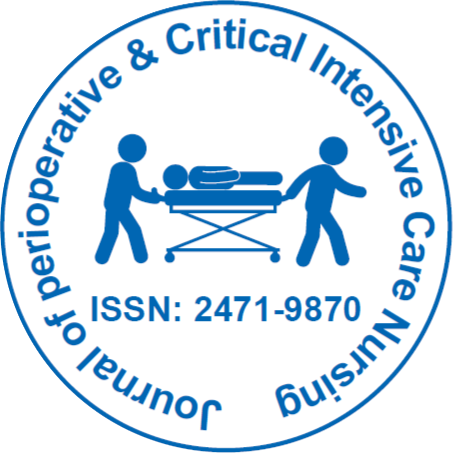
ஜர்னல் ஆஃப் பெரியோபரேடிவ் & கிரிட்டிகல் இன்டென்சிவ் கேர் நர்சிங்
திறந்த அணுகல்
ஐ.எஸ்.எஸ்.என்: 2471-9870

ஐ.எஸ்.எஸ்.என்: 2471-9870
Aliyu Danjuma1*, Adeyeni Abdul-Lateef Babatunde, Otufale Adenike Taiwo and Shiaka Ndalayi Micheal
Introduction: The perioperative nurse’s job content becomes highly extensive in the 21st century. This makes them more frequently exposed to various degrees of hazards. However, little is known about rates and patterns of operating room hazards among Nigerian perioperative nurses.
Aim: To investigate the rates and patterns of operating room hazards among Nigerian perioperative nurses.
Methods: A cross-sectional descriptive survey of all Nigerian perioperative nurses who attended the 15th Annual Scientific Conference of National Association of Perioperative Nurses of Nigeria (NAPON) in Sokoto between Monday 12th and Friday 16th October, 2015 was undertaken. An adapted and modified questionnaire on impact of “operating’’ room occupational hazards on intraoperative nurses was used for this study. The questionnaire was modified in content to include questions on rates and patterns of room hazards among perioperative nurses. Statistical analysis was performed using the descriptive (frequency, percentages, mean and standard deviation) and inferential operating statistics (Spearman’s correlation coefficient). The level of significance was set at p < 0.05.
Results: This study involved 92 Nigerian perioperative nurses among the conference attendees who gave consent to participate in this study. Males constituted 58 (63.0%) of the study population and 80.0% of the participants were between the age of 31 and 60 years, with a mean age of 44.7 (± 9.5) years. The prevalence rate of operating room hazards among Nigerian perioperative nurses was 77% and a similar portion (72%) of the participants in this study indicated being occasionally exposed to daily hazards related to factors at workplace. Nearly two-third (64%) of the participants affirmed being occasionally exposed to accidental type of hazards. There were statistical significant relationship between sex (p = 0.030), (p = 0.026), age group (p = 0.002), years of experience (p = 0.003), rank (p = 0.033), (p = 0.003), workplace health facilities (p = 0.001), (p = 0.047) and workplace geopolitical zones (p = 0.040) with participants' exposure to operating room hazards and the overall rating of their operating room working condition.
Conclusion: The rate of operating room hazards among Nigerian perioperative nurses is high. This demonstrates a need for more professional consciousness on the concepts of educational and practical interventions practices on ways of identifying and preventing different types of hazards not only among perioperative nurses but also among other similar professional groups can significantly reduce the risk of hazards exposures.